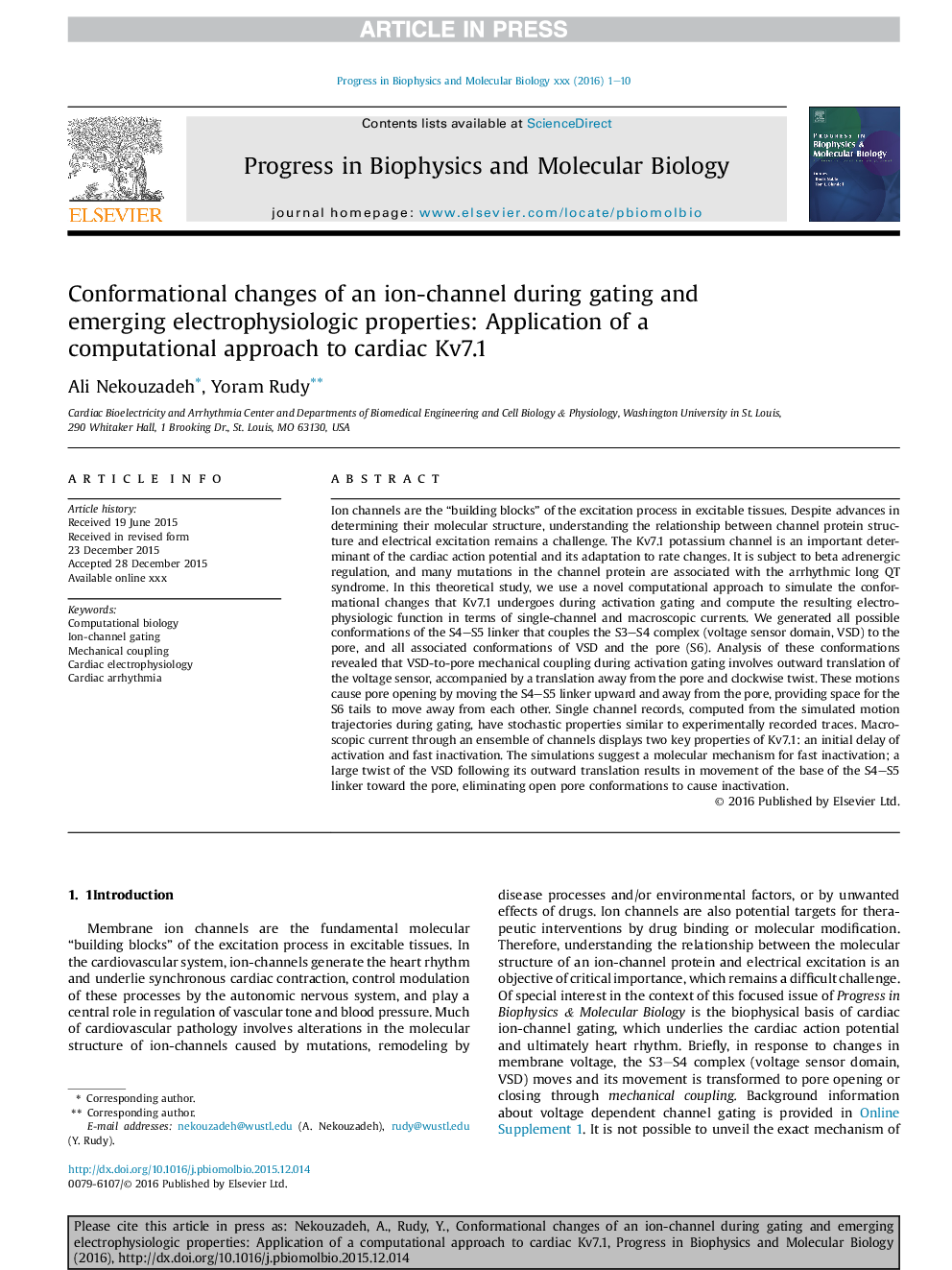| کد مقاله | کد نشریه | سال انتشار | مقاله انگلیسی | نسخه تمام متن |
|---|---|---|---|---|
| 8400808 | 1544477 | 2016 | 10 صفحه PDF | دانلود رایگان |
عنوان انگلیسی مقاله ISI
Conformational changes of an ion-channel during gating and emerging electrophysiologic properties: Application of a computational approach to cardiac Kv7.1
دانلود مقاله + سفارش ترجمه
دانلود مقاله ISI انگلیسی
رایگان برای ایرانیان
کلمات کلیدی
موضوعات مرتبط
علوم زیستی و بیوفناوری
بیوشیمی، ژنتیک و زیست شناسی مولکولی
بیوفیزیک
پیش نمایش صفحه اول مقاله

چکیده انگلیسی
Ion channels are the “building blocks” of the excitation process in excitable tissues. Despite advances in determining their molecular structure, understanding the relationship between channel protein structure and electrical excitation remains a challenge. The Kv7.1 potassium channel is an important determinant of the cardiac action potential and its adaptation to rate changes. It is subject to beta adrenergic regulation, and many mutations in the channel protein are associated with the arrhythmic long QT syndrome. In this theoretical study, we use a novel computational approach to simulate the conformational changes that Kv7.1 undergoes during activation gating and compute the resulting electrophysiologic function in terms of single-channel and macroscopic currents. We generated all possible conformations of the S4-S5 linker that couples the S3-S4 complex (voltage sensor domain, VSD) to the pore, and all associated conformations of VSD and the pore (S6). Analysis of these conformations revealed that VSD-to-pore mechanical coupling during activation gating involves outward translation of the voltage sensor, accompanied by a translation away from the pore and clockwise twist. These motions cause pore opening by moving the S4-S5 linker upward and away from the pore, providing space for the S6 tails to move away from each other. Single channel records, computed from the simulated motion trajectories during gating, have stochastic properties similar to experimentally recorded traces. Macroscopic current through an ensemble of channels displays two key properties of Kv7.1: an initial delay of activation and fast inactivation. The simulations suggest a molecular mechanism for fast inactivation; a large twist of the VSD following its outward translation results in movement of the base of the S4-S5 linker toward the pore, eliminating open pore conformations to cause inactivation.
ناشر
Database: Elsevier - ScienceDirect (ساینس دایرکت)
Journal: Progress in Biophysics and Molecular Biology - Volume 120, Issues 1â3, January 2016, Pages 18-27
Journal: Progress in Biophysics and Molecular Biology - Volume 120, Issues 1â3, January 2016, Pages 18-27
نویسندگان
Ali Nekouzadeh, Yoram Rudy,